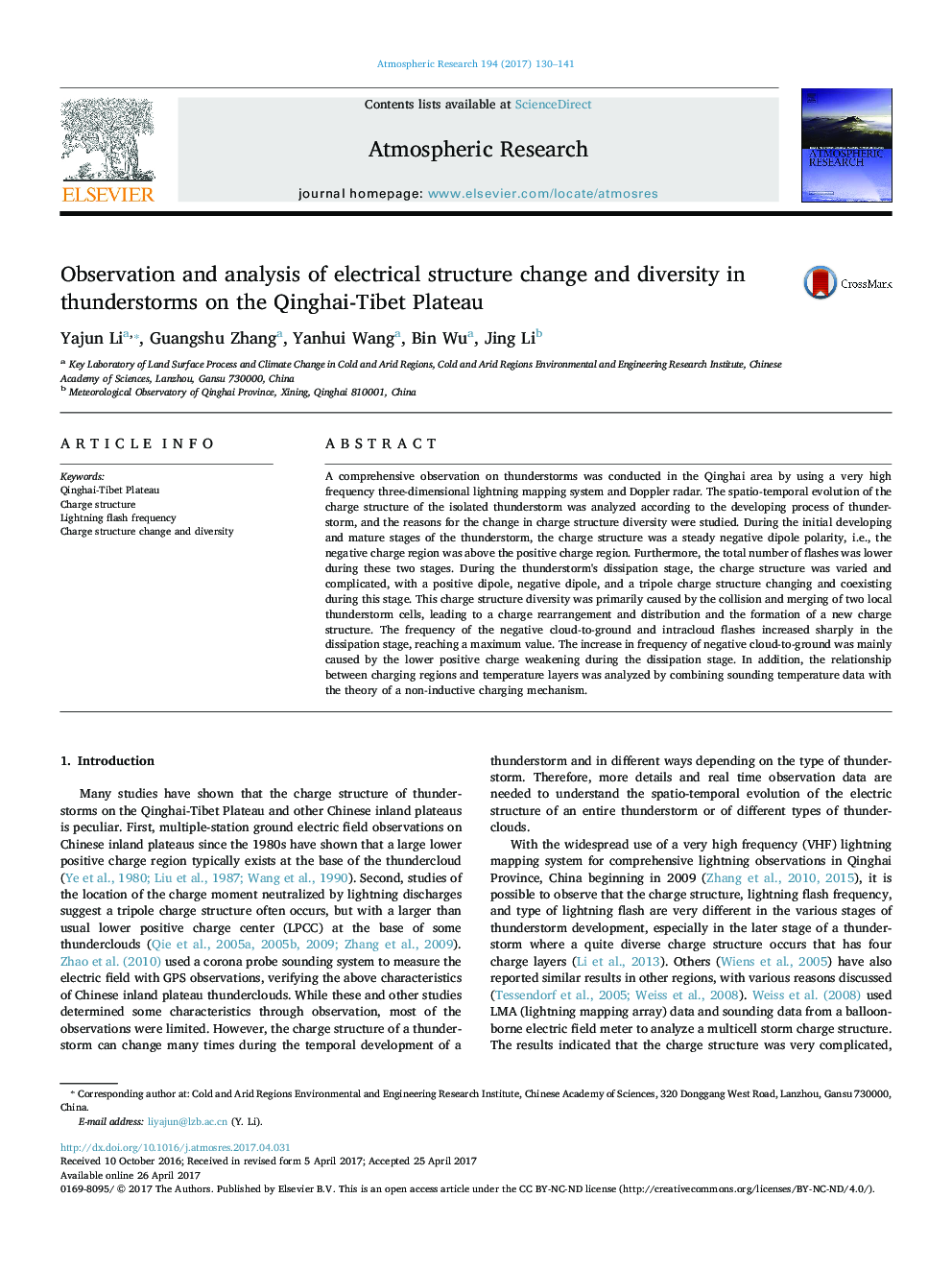| Article ID | Journal | Published Year | Pages | File Type |
|---|---|---|---|---|
| 5753616 | Atmospheric Research | 2017 | 12 Pages |
Abstract
A comprehensive observation on thunderstorms was conducted in the Qinghai area by using a very high frequency three-dimensional lightning mapping system and Doppler radar. The spatio-temporal evolution of the charge structure of the isolated thunderstorm was analyzed according to the developing process of thunderstorm, and the reasons for the change in charge structure diversity were studied. During the initial developing and mature stages of the thunderstorm, the charge structure was a steady negative dipole polarity, i.e., the negative charge region was above the positive charge region. Furthermore, the total number of flashes was lower during these two stages. During the thunderstorm's dissipation stage, the charge structure was varied and complicated, with a positive dipole, negative dipole, and a tripole charge structure changing and coexisting during this stage. This charge structure diversity was primarily caused by the collision and merging of two local thunderstorm cells, leading to a charge rearrangement and distribution and the formation of a new charge structure. The frequency of the negative cloud-to-ground and intracloud flashes increased sharply in the dissipation stage, reaching a maximum value. The increase in frequency of negative cloud-to-ground was mainly caused by the lower positive charge weakening during the dissipation stage. In addition, the relationship between charging regions and temperature layers was analyzed by combining sounding temperature data with the theory of a non-inductive charging mechanism.
Related Topics
Physical Sciences and Engineering
Earth and Planetary Sciences
Atmospheric Science
Authors
Li Yajun, Zhang Guangshu, Wang Yanhui, Wu Bin, Li Jing,
